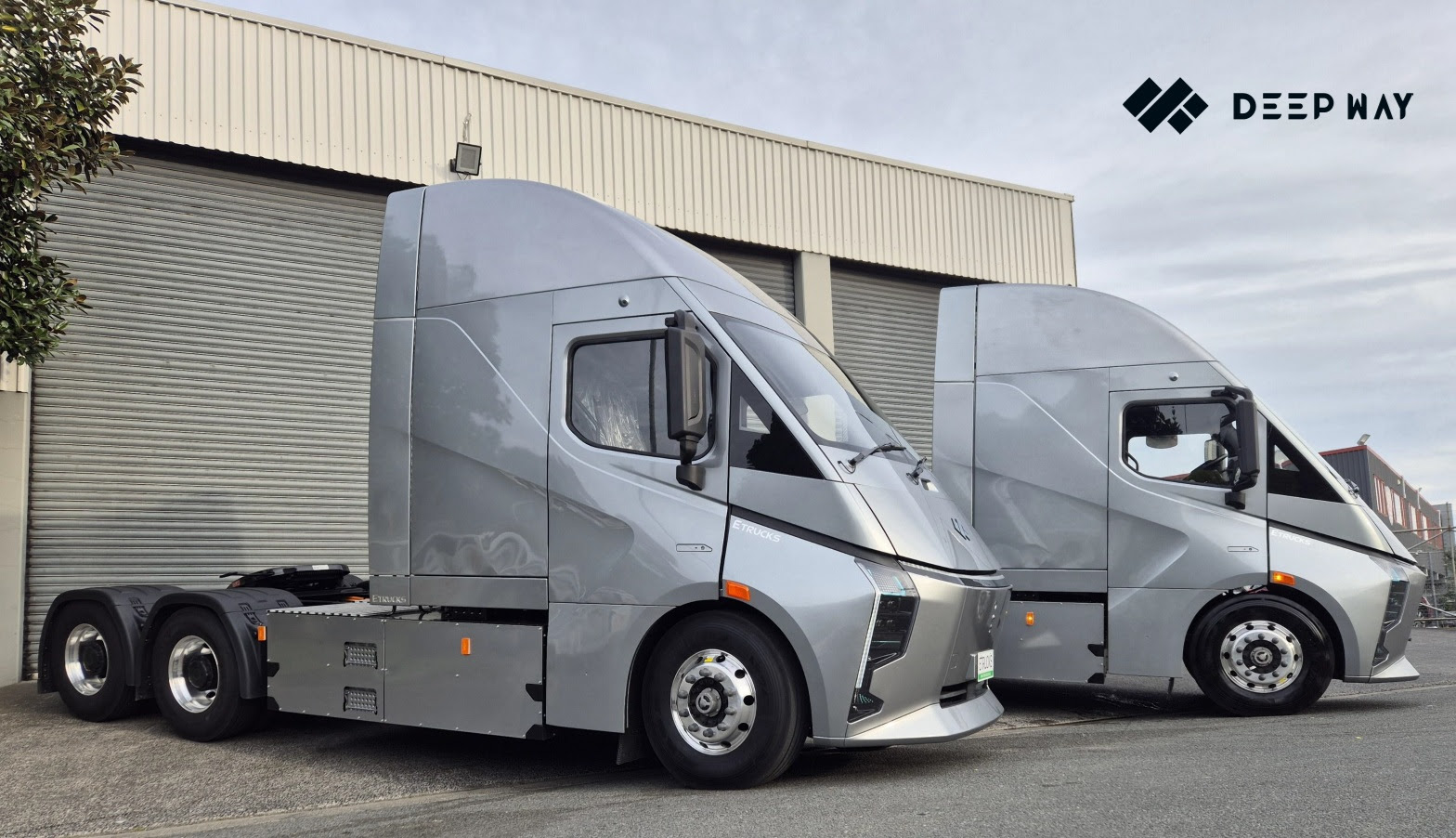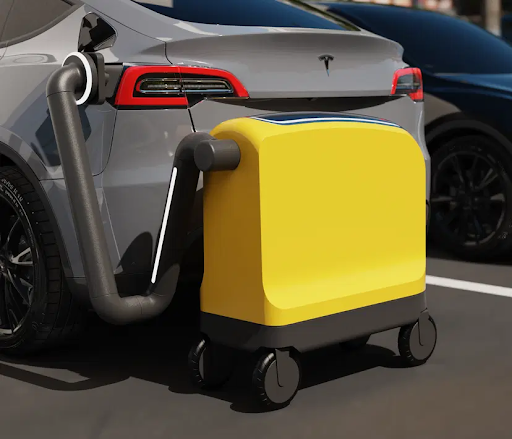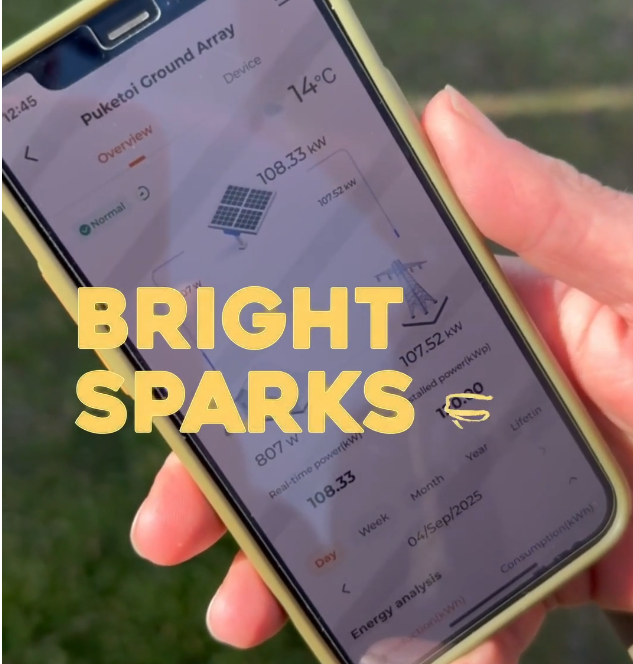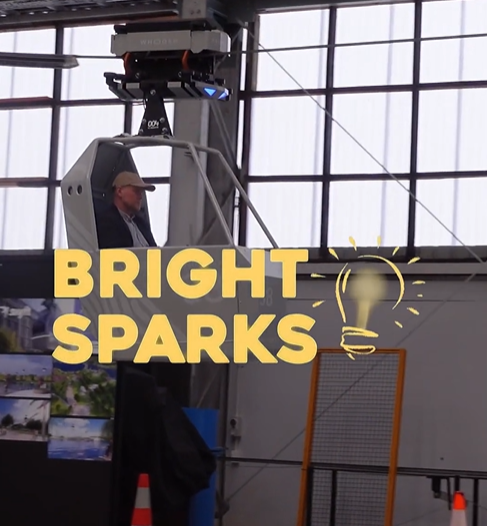News & Updates


The rise (and savings) of hot water heat pumps, Fisher & Paykel creates a one-stop-electrification shop, thinking fast and slow on World EV Day, Tesla gets into the train game, Vessev's beautiful boat, Toyota's white elephant, and one positive aspect of keeping up with the Joneses.


If you've got questions about our recent report showing the almost $100 billion electrification opportunity in front of New Zealand, then Lou Aitken probably got the answers at the Investing in Tomorrow launch event. Check out the panel discussion with Dr Saul Griffith, Reserve Bank chief economist Paul Conway and Parliamentary Commissioner for the Environment chief economist Geoff Simmons.


Mike Casey lays out Rewiring Aotearoa's argument for a regulatory change that would allow customers with solar and batteries to compete fairly with large generators, something we call symmetrical export tariffs. It's important to note that these are not subsidies or rebates. "They simply ensure customers get a true reflection of the value they provide to the electricity market. They are no more a rebate than the half-hourly prices in the wholesale market, paid to generators for their output ... The current pricing structure is compromising New Zealand’s delivery of a secure and affordable power system; it fails to recognise that peak demand could be reduced with the help of household batteries; it perpetuates the idea that we need to spend tens of billions to upgrade our poles and wires to cope with that peak demand; and it is stifling demand for solar and batteries among New Zealanders because their true value is not being accurately reflected in the price paid for export."


"The only way we can begin to hedge our businesses against higher spot prices is by beginning to generate our own electricity," says Mike Casey. Read about how he hopes to turn his energy bill into a revenue stream with the help of solar and batteries that can generate electricity cheaply, and store it to sell when it's expensive.


Rewiring Aotearoa thinks customers need to be considered part of the energy infrastructure and three academics from AUT agree, arguing that a more decentralised system could play an important role in a more resilient system. As they say: "By focusing only on solar farms, we are using new technologies in an old-fashioned way, by centralising power generation in certain locations, in the hands of a few companies."


The recently announced Energy Competition Taskforce has announced "two packages of work that collectively aim to encourage investment in new generation, bolster competition and provide more opportunities for consumers to manage their own electricity use and costs" and said it is "serious about creating change". Of particular interest to Rewiring Aotearoa was the section about better rewarding customers to "encourage greater uptake of things like time-of-use pricing plans, rooftop solar and batteries, and demand response by industrial firms," as EA chair Anna Kominik said in a press release. This is positive and aligns with what we've been asking for and what we outlined in our symmetrical export tariffs paper, but it is important to note that these are not rebates. This is just cost-reflective two-way pricing that levels the playing field between small and large generators. As Rewiring Aotearoa CEO Mike Casey says: "To date, every home giving energy back has been getting a bad deal. We believe their contribution to the system should be accurately priced and, as we said when the taskforce was announced, we want a level playing field, not just a slightly less uneven playing field." Casey says this pricing also needs to be mandatory otherwise the EA risks further delay to keeping bills down and building a more secure and resilient energy system. "We talk about guaranteeing investment signals on the big end of town. How about the average Kiwi got some guaranteed investment signals that are fair?"


One News has covered the Investing in Tomorrow report, which shows that big household savings from electrification add up to big national savings. As Dr Saul Griffith says about the $29 million day that New Zealand could save if we swapped out fossil fuel machines for electric equivalents and ran them off renewable electricity from the grid, rooftop solar and batteries: "It's nice to be able to make the carrot that large because I think it focuses the policy mind on how to get there."


'New Zealand can't afford not to electrify,' says Q&A's Jack Tame in the introduction to a story about Rewiring Aotearoa's new paper Investing in Tomorrow. He talks to Dr Saul Griffith about the savings at a household level, the $29 million a day electrification opportunity for the country as a whole, the economic slam dunk of rooftop solar and why the Government should be looking to give favourable finance to customers who can become part of our energy infrastructure.


Saul Griffith speaks to Bernard Hickey on When the Facts Change podcast about the new paper Investing in Tomorrow. As it summarises: "Saul Griffith helped change the world a couple of years ago when he and a couple of "tech bro" mates convinced Joe Biden to rewrite the Democrats’ Green New Deal and pitch it as an Inflation Reduction Act to rewire America’s economy with renewable energy. Saul makes a pitch for Aotearoa to do the same, but much cheaper and much faster, instead of the government’s current plan to spend $1 billion importing gas over the next couple of years. He presents Rewiring Aotearoa’s paper on The Electrification Opportunity, which estimates cheaper power costs worth $10.7 billion per year by 2040.


We've filled our electric boots this week with more good news for EV seekers as the upfront costs keep dropping, the EV that has been around the world about 50 times, grid-scale batteries are on the rise and the world's biggest one is equal to about 130 million laptop batteries, restaurants in New Orleans are being given solar panels to help the community out in case of hurricanes, and a spicy electricity-related letter to the editor.


As we've said before, it's not just us arguing for more rooftop solar. A number of academics are onboard and Kevin Trenberth, Distinguished Scholar at the National Center for Atmospheric Research in the US and honorary academic at the Faculty of Science, University of Auckland, is one of them. As he says: "Germany has about 20 percent less sunshine than New Zealand, but 3.7 million solar systems generating 61 gigawatts of power (12 percent of their total energy supply). In New Zealand, there is an estimated 200 MW from rooftop solar, and all solar (not just rooftop) provides under 1 percent of New Zealand’s power. A major reason for the very low uptake of solar in New Zealand is the absence of incentives and effectively, penalties against investing in it." We're doing our best to create incentives and remove penalties by pushing for symmetrical export tariffs, where a customer is paid the same amount for any electricity that is exported from the premises at peak times as they are charged for any power they consume at peak times. If we level the playing field, customers can become part of the energy system.


Farmer's Weekly editor Bryan Gibson talks to Mike Casey on the InFocus podcast about paying back the capital on a recent solar investment in five years, the changes that need to be made to the 'braided river' that is our national grid to incentivise more farms to become power plants, and the strangeness of the current system that sees fossil fuels sent from Saudi Arabia, to Singapore and then onto boats and trucks, when we could be powering our electric farm machines directly from the farm.


A cornucopia of electrification optimism this week, with Ubco inking a big deal in Australia, FTN Motion also getting set to head across the Tasman, Octopus Energy's founder Greg Jackson on the new champ in energy town, David Wallace-Wells looks at what we will do with all our 'free' solar power, and Germany shows how loosening up permits for renewables has led to a huge and rapid boost of energy supply.


"Combined, New Zealand homes and businesses are currently spending around $55 million every day or $20 billion per year on fossil fuels, most of which are imported," says Saul Griffith. "Approximately two-thirds of New Zealand’s total energy needs are met by burning these expensive fossil fuels. But this country is one of the first in the world to cross an ‘electrification tipping point’, where the cost of buying and financing electric machines is cheaper over the long run than using fossil fuels. That leads to savings for individual households and it could lead to huge savings for the country as a whole.”


Alka Prasad digs into the numbers in the Investing in Tomorrow report and finds out how New Zealand could save $29 million per week just by electrifying our homes and cars.


August 28: Rewiring Aotearoa has welcomed the announcement of a taskforce to address issues in the electricity market but says the time for investigating is over and it is now time for action.


"The principle narrative of the last few decades – that we can’t afford to solve climate change – is just not true," Rewiring Aotearoa CEO Mike Casey tells Ellen Rykers for the Future Proof newsletter as the organisation launches a new report outlining the economic opportunity of electrification called Investing in Tomorrow.


"You can actually now demonstrably show that for large sections of every economy in the world, it is now cost effective to solve climate change – and that's a pretty radical new idea," says Saul Griffith.


Following the launch of the Investing in Tomorrow report, Nine to Noon's Kathryn Ryan spoke to Dr Saul Griffith about the massive savings opportunity that electrification presents New Zealand households and the nation as a whole, the lessons we can learn from other markets and changes we need to make to our electricity system.


We’re all about the win-win-wins at Rewiring Aotearoa. And, as Dr Saul Griffith says in this presentation, electrification promises to save every New Zealander money, greatly improve the country’s books, and slash our emissions. What’s not to love?


New research from Rewiring Aotearoa shows electrification could save New Zealand households around $29 million per day by 2040 and massively reduce the country’s emissions.

Solar and batteries - in homes and EVs - offer signicant resilience benefits during times of crisis and the Ratepayer Assistance Scheme can help unlock private investment.
Read moreShareable linkDownload
Electrification is the single biggest opportunity to improve fuel security in New Zealand and that's why we think we need a bold national energy independence plan, not just more incremental changes to our current fuel security plan.
Read moreShareable linkDownload
Unmanaged EV charging that occurs at network and system peaks could add unnecessary electricity infrastructure investment, increasing bills for all customers. Investment in our networks is scaled to meet peak demands and has the potential to significantly increase electricity bills over the coming decades. It is important we take action to shift demand, where it makes sense, to avoid peak demand increases. Rewiring Aotearoa is very supportive of the efforts the Ministry of Business Innovation and Employment is taking to consider options to deliver a more flexible electricity system that will lower system costs for all consumers. Uptake of smart EV chargers is one way to manage peak EV demand and support a lower system cost. However we do not think there is a strong enough case to mandate that all fixed EV charging units sold in New Zealand must be smart.
Read moreShareable linkDownload
Rewiring Aotearoa supports the proposed changes to Multiple Trading Relationships (MTR) (allowing two traders – distributed generation and consumption), which will increase consumer choice and introduce more competition to retail tariffs. For example, it will disincentivise tariffs that offer competitive export tariffs, but also ramp up consumption tariffs. The Electricity Authority should also implement changes at this time that require retailers to allow large sites to share solar across multiple co-located installation control points (ICPs, i.e. ICP aggregation), and facilitate peer to peer trading for small scale renewable generators with local sites. Rewiring Aotearoa disagrees that delaying these steps via a staged approach is in consumers best interest. Consumers should not have to wait until demand increases to unlock the benefits of their solar and battery systems or access more competitive options from retailers. This should be supported now, to help consumers make investment and retail tariff decisions that reduce their overall energy bills.
Read moreShareable linkDownload
We appreciate that broader resource management reform is underway that will ultimately provide a more consistent national framework. However, we cannot afford to wait for the perfect system while workable solutions are delayed. In the meantime, inconsistent and unnecessary consenting requirements for small-scale ground-mounted solar are slowing down projects that could deliver immediate benefits - lowering energy costs, strengthening resilience, and supporting the grid. While long-term reform is important, immediate adjustments will ensure small-scale solar isn’t held back by outdated or inconsistent rules.
Read moreShareable linkDownload
"Investing in natural gas in homes doesn’t make economic sense anymore for New Zealanders ... Rewiring Aotearoa’s view is that the Government should support a managed transition away from natural gas for the homes and non-industrial businesses connected to reticulated natural gas distribution networks. This would help address inequity for households on low incomes and renters, and provide greater certainty over how quickly customers will disconnect, when networks would likely retire and cost recovery timelines."
Read moreShareable linkDownload
Rewiring Aotearoa's submission highlights that successful digitalisation should allow customers to maximise benefits from their provision of demand flexibility and solar and battery exports, without third parties (aggregators or VPPs) routinely taking a cut of the value. Retail offerings that include time of use prices and fair export tariffs will be key enablers of successful digitalisation of the electricity system. Customers need a fair deal through their electricity prices and export tariffs. This means the customers need to have the option to choose from a range of retail tariffs that include time of use prices, fair export tariffs (that reflect the value in the wholesale market) and symmetrical export tariffs from distributors.
Read moreShareable linkDownload
Rewiring Aotearoa is extremely supportive of the focus the Electricity Authority is putting into exploring opportunities and seeking views on a more ‘decentralised’ electricity system. It’s great to see the release of the Green Paper seeking views from New Zealanders on the role they can play in the future electricity system and how a more decentralised electricity system should evolve. As the Green Paper explains New Zealanders will benefit from a more decentralised, community-centric energy system through lower energy bills, greater energy resilience, fuel security and lower emissions. However there are some assumptions and emphasis in the Green Paper that we think needs to change
Read moreShareable linkDownload
Rewiring Aotearoa is supportive of the Innovation and non-traditional solutions allowance (INTSA) and the development of Guidance for submissions. Read our full submission by downloading the document.
Read moreShareable linkDownload
While the potential implications of the Bill are wide-ranging, our submission has focused on the potential implications for the electrification of Aotearoa NZ if the Bill is enacted as proposed. This is pertinent to Rewiring’s work, because one of our core aims is to help reduce energy bills for customers - NZ’s households, farms, and businesses. Significant changes are needed to fix the status quo, and we are concerned that the Bill may inadvertently bake in the existing rules governing the sector.
Read moreShareable linkDownload
Rewiring Aotearoa is supportive of the development of Publicly Available Specification for Residential solar photovoltaic (PV) and battery storage systems guidelines. These guidelines can provide a consolidated and trusted source of information to help households navigate the process of choosing and installing solar PV and batteries. There is some messaging and information in the PAS that we think needs to be changed or added to provide households with the best advice to support them to maximise benefits from solar PV and batteries. This includes removing the focus on pay back periods and informing households about cost savings from day one from solar PV and batteries financed over the life of the system. Households also need information about the potential risks of some existing lease to own sales models which provide little real benefit to households with the bulk of the savings captured in suppliers profits. Download the document to read our full submission.
Read moreShareable linkDownload
In a cross-submission, Rewiring Aotearoa has responded to a range of concerns raised by other submitters in the Energy Competition Task Force's consulation.
Read moreShareable linkDownload
We support the role that government procurement can play in benefitting every community across the motu. We agree that simplifying and streamlining the procurement process is important, and reducing rules is a logical starting point. However, this should not undermine key considerations and past efforts in ensuring government spending supports long-term positive outcomes. Government procurement can support us to go for growth by increasing productivity of energy, which is a fundamental economic input
Read moreShareable linkDownload
Overall, Rewiring Aotearoa welcomes the objectives of this package of proposals. from the Energy Competition Task Force. We view the package as a critical step in improving energy system outcomes for all consumers. We consider retailers paying consumers fairly as a critical step, and we are mostly satisfied with the Task Force’s approach to this (initiative 2C) and think it will create better outcomes for New Zealand consumers and the energy system as a whole. In contrast, the Task Force’s preferred option around how distributors are required to reward peak input from consumers (initiative 2A) will not in our view meet the Task Force’s (or the Electricity Authority’s) stated objectives.
Read moreShareable linkDownload
Focusing on the emissions reductions at home through electrification is a major opportunity (and challenge) for Aotearoa NZ. Homes, farms, and businesses must play a role in driving emissions reductions through electrification and the potential must be recognised and addressed to our 2035 international climate change target.
Read moreShareable linkDownload
Rewiring Aotearoa believes we need to make better use of our existing infrastrucuture, see customers as an essential part of a 21st Century energy system and that electrification will lead to much greater energy security and resilience.
Read moreShareable linkDownload
Rewiring Aotearoa's submission to the Electricity Authority on its Network Connections Project - Stage One is in and it is good to see the Authority practicing its statutory objective of protecting the interests of consumers.
Read moreShareable linkDownload
The Ministry for Business, Innovation and Employment opened consultation on a discussion document about amendments to the Electricity Safety Regulations to expand the permitted voltage range for electricity supply. Rewiring Aotearoa's submission believes changes are needed to prepare for the rapid adoption of customer energy resources, and electricity distribution companies need to be compelled to allow export limits to be increased.
Read moreShareable linkDownload
The Department for Prime Minister and Cabinet and the Ministry for the Environment proposed a topic for a Long Term Insights Briefing entitled 'Everyone plays a part: building New Zealand’s resilience in the context of global trends and our unique natural environment'. Rewiring Aotearoa's submission says energy security and resilience, critical infrastructure failing and commodity/energy price shocks are especially important for Aotearoa NZ’s resilience to future challenges, and farms can also play an important role.
Read moreShareable linkDownload
Our ERP2 submission outlines what we think needs to be done to improve the Government's plan to reach our climate targets, electrify the Aotearoa New Zealand economy and build a fairer future energy system for New Zealanders that saves people money and does not leave anyone behind.
Read moreShareable linkDownload
There is a relevant saying: ‘Information wants to be free’. While the proposed Consumer and Data Product Bill takes a step in that direction, it does not offer the level of freedom that could be technically accomplished, nor the level of freedom that is likely to unlock the maximum level of innovation.
Read moreShareable linkDownload
Rakiura / Stewart Island faces the highest electricity prices in New Zealand. Successive governments have funded report after report and numerous fly-in visits by Ministers have failed to change this situation for the local community. Rewiring Aotearoa believes the opportunity is to harness existing solar and battery technology to deliver significant cost-of-living savings and reduced emissions at scale via electrification on Stewart Island right now. With financed solar and batteries, electricity usage costs for residents could be halved without delay. Rewiring Aotearoa has been engaging with the local community, who have been sending us their power bills. On Saturday 27th April some of the Rewiring team visited Stewart Island (including Mike Rewi who has strong whakapapa to Stewart Island). What we are hearing from this community is many locals fear the proposals and the likely “preferred option” will be focused on replacing current diesel generators, not on reducing the cost of energy for consumers. Our proposal outlines Rewiring Aotearoa’s pitch for an alternative approach to develop a community-led energy solution for the Island.
Read moreShareable linkDownload
Overall, we encourage the Commission to think beyond competition merely as a driver for innovation, to consider the outcomes from innovation for the long term benefit for New Zealanders. Rewiring Aotearoa believes one such outcome from market innovation is supporting the electrification opportunity for Aotearoa New Zealand. The Commission has the opportunity to play an active role in driving this not just through the energy market, but also through the personal banking market. It is important that these functions are not seen in isolation, but as a system, to better realise the Commission's role in delivering on NZ’s emissions reduction plan, and 2050 Nationally Determined Contribution.
Read moreShareable linkDownload
18 March 2024: New Zealand is one of the first places in the world where electric appliances and vehicles are now more affordable than their fossil fuel equivalents. A new report has shown that, on average, homes currently using gas appliances and petrol vehicles could save thousands every year if they went electric and got their electricity from a combination of rooftop solar, home battery and New Zealand’s already highly renewable grid.
Read moreShareable linkDownload
In this future, consumer infrastructure needs to compete on a level playing field with traditional infrastructure – if a $10,000 battery on a consumer’s premises can provide the same service as a $20,000 supply-side asset (a network or generation investment), the consumer’s asset should be selected for the service. However, today there is a systemic bias towards traditional infrastructure largely because it is seen as significantly more ‘dependable’. There are a variety of historical reasons for this. Our primary context to this submission is that many of the assumptions and rationale for this bias are quickly falling away, and DPP4 provides a significant opportunity for the Commerce Commission (the Commission) to reset the assumptions and correct some of this bias.
Read moreShareable linkDownload
The EA has the ability to take a leadership role in the energy transition on behalf of electricity consumers. Far more than the Commerce Commission’s oversight of EDBs investment plans, the EA’s network pricing workplan gives consumers agency in the development of the electricity system. When consumer agency is stifled, they will likely have significantly worse financial outcomes on their bills. Much of the necessary changes have been demonstrated already locally or overseas, and the remaining question is not if the changes are possible but if we as a nation will have the courage to implement them on the timeline required to drive better energy transition outcomes for consumers.
Read moreShareable linkDownloadWe need gas in the short term to generate electricity and for certain industries to keep operating, but gas is expensive, it is likely to get more expensive, and it is running out faster than expected. So how do we use it now? How are shortages and price rises impacting homes and businesses? And what can we replace it with?
Read moreWe need great urban design that encourages electric public and active transport for safe neighbourhoods and healthy lifestyles, but we also need electric cars for rapid decarbonisation and to address all the vehicle travel we realistically aren’t going to shift or avoid. These two things can be complementary.
Read moreWhen it comes to our energy system, we could do the bare minimum and pay the price, or we could think ahead and reap the rewards. Here's what both of those options could look like in 2030.
Read moreYou will always have to pay for an energy subscription. Using renewable electricity in electric machines (and ideally running on the sun) is the cheapest energy subscription you can get. Here's how the numbers stack up.
Read morePlenty of people need cars (and plenty of people still want them), and other vehicles are literal engines of prosperity. We don't have to give them up to reach our climate goals. We just need them to be electric.
Read moreSolar on our rooftops, farms and businesses can displace the emissions generated by burning fossil fuels in our homes and especially our cars, provide the extra electricity we need to run our electric machines, help bring the cost of electricity down for everyone on the network, and improve our energy security by keeping water in our hydro lakes for when we need it most.
Read moreWe often hear from people who aren’t sure if switching to an electric alternative is the right move. One of the most common questions we get asked is ‘will switching to an electric machine actually reduce my carbon footprint if creating the new machine or materials produces emissions?’It’s a fair question, and we completely agree it’s important to think about the full life cycle of the products we buy and use. Electric alternatives, including vehicles, often produce more emissions than fossil fuel equivalents during manufacturing. But, over the lifetime of the machine, they create much less carbon pollution because they don't burn any fuel.
Read moreFossil fuels for homes, transport and industrial processes make up the vast majority of the country’s total energy consumption. Electrifying the machines that use these fossil fuels means we will use more electricity but much less energy overall.
Read moreAn electrified energy system is actually full of opportunities for redesign, reuse, recovery and recycling. There are opportunities for innovators and entrepreneurs to generate value across the lifespan of every energy asset, not least the return of its components to the manufacturing cycle. To explore this further, Rewiring Aotearoa has partnered with Circularity, local experts in circular design and strategy, to explain what the circular economy is, how to integrate circularity into the design of energy systems, and the role of policy strategy to make it happen.
Read moreThere are no free lunches in energy. But some lunches are far, far cheaper than others. Electrifying everything will massively reduce the overall material and energy requirements of the global energy system. This can be said with high confidence. To be sure, renewable energy systems take materials and energy to build. But this is dwarfed by the mind-boggling scale of extraction, consumption and wastefulness of fossil energy.
Read morePeople sometimes talk about ‘carbon tunnel vision’ – that is, the single-minded pursuit of emission reductions at the sake of everything else. But this is the wrong way to think about electrification. It isn’t only about emissions (even though preventing the world from dangerous overheating is quite the co-benefit). It isn’t only about the tech or the kit: the rooftop solar panels, the batteries, the electrified appliances and vehicles. These are just the means to an end. Electrification is about people and it is a fundamentally better way to power our lives and livelihoods.
Read more

Bidirectional charging starts to float down the mainstream in New Zealand; how hot water and EVs could turn cities into giant batteries; Nelson joins the smart 'n sunny club and puts some panels on public buildings; good news as China goes backwards; two new electric big rigs reach New Zealand; and a potential solution for Shotover Jet.
Read more

The big solar installs continue in New Zealand at Go Media Stadium and Ngā Hua e Whā, the largest marae in the Southern Hemisphere; rooftop solar closes in on our biggest power plants; the world's biggest battery is switched on in Australia and lots of small batteries play an important role in California; Bloomberg looks at the incorrect predictions on EV adoption and how they're wrong in both directions; it's not just the wealthy countries adopting EVs as Nepal hits 76%; GM gets the record for longest drive on a single charge; and dads like electric stuff.
Read more

New Zealand invests in the wrong tech and heads back to 2017; Aurora's doubling of the export limit and what it means for solar installs; East restaurant and Sudima Hotels embrace induction woks and get set to upgrade the rest of its gas equipment; Samuel L Jackson extols the many virtues of wind energy; Jason Gunn goes electric; and the world's first e-bike that can be charged with a laptop cord.
Read more

Lowest prices are just the beginning this week as Bunnings gets into the solar and battery game in a big way in Australia with plans for a zero-dollar upfront deal; Port Nelson has electric lift off with its new crane and a new solar powered hybrid cargo ship is launched; Inductive Robotics wants to bring chargers to the cars, rather than the other way around; a new campaign suggests that South Australians are revolting and loving it; and Johnny Solar releases a beautiful version of The Kinks' Lola.
Read more

Auckland CBD's biggest solar install shows that existing rooftops - big and small - are an easy win for electricity generation; New Zealand researchers leading the world on solar efficiency; a clever scheme to train up more heat pump installers in the UK; a very early example of loadshifting; and electric school buses hit the road in the US.
Read more
Solar smashes a few records and helps the world get off gas and coal; homes, not power plants, are the key to lower power prices; 24 new bus chargers are installed in one day in Auckland; DARPA makes some very special popcorn by beaming energy wirelessly for 8km; and an astronomer discovers an addictive new star gazing app.
Read more

Redwood Materials claims a record with old EV batteries used to store cheap solar to run a small data centre; OneEnergy launches a product that puts the sun directly into your water tank; more plug-in solar news from Ikea and Utah; very fast electric boats and cars; and a beautiful union between two star-crossed lovers.
Read more

Victoria looks to get off the residential gas with a range of changes, an announcement in the UK gets everyone excited about V2X, why EVs are a good hedge against geopolitical strife, new comparison and switching partner announced (and we have a couple of requests), and it turns out that keeping the emissions out of the sky is a better idea than trying to catch them.
Read more

Australia's battery sales take off as Government incentive drives demand; Australia's first urban renewable energy zone is announced; the Whole Story and Hutt City Council launch some electric resources for kids; Germany finds more uses for solar panels on its highways; and predictions versus reality when it comes to solar and coal.
Read more

With a classic Kiwi combination of pride and self-doubt, we charge our glasses after another big week of electric momentum; Auckland gets a glimpse of its first electric ferry from EV Maritime; Whakatane finds a clever way to get past the upfront costs and start running on the sun; a big study shows how pervasive EV myths have become even though they are "demonstrably false"; and our misperceptions continue when it comes to fires at battery energy storage systems.
Read more

Trent Yeo, the founder of Ziptrek Ecotours, is a big supporter of his region's goal to become the world's most electric destination, a vision being brought to life by the Queenstown Electrification Accelerator. And he walks the talk with his own low-impact business and his highly efficient all-electric home.
Read more

While the vast majority of EV charging happens at home, reliable public charging infrastructure is essential for those who don't have that option and for those occasional longer trips. ChargeNet, which just celebrated its tenth birthday, has been there from the start and, whether it's the 50kW workhorse of the early days or the 300kW beast of today, the company has helped more New Zealanders drive on locally-made electrons rather than foreign fossil fuel molecules.
Read more

Vessev has been turning heads with its beautiful electric hydrofoiling boats in New Zealand and it will soon be turning heads in Northern Ireland as it has just received its first international order for an 11-person VS-9 from an eco tourism resort.
Read more

The Crutchley family has been turning sunlight into food and fibre on their Maniototo farm since 1939. Now, Emma Crutchley and Kyle Hagen are turning sunlight into energy.
Read more

Queenstown's roads are regularly clogged and, as the region continues to grow, that's only going to get worse. But Whoosh thinks the solution could be right above our heads.
Read more

The idea of sharing excess energy with your community has long been a dream of solar and battery enthusiasts and that idea is starting to blossom. Microgrids have been proven to work in remote Australian regions; some marae in New Zealand are helping to reduce bills for people in their communities; Kāinga Ora has successfully tested the concept of solar sharing in social housing; and Bright Spark Tama Toki is attempting to bring the idea to life on his home island of Aotea / Great Barrier.
Read more

There are plenty of clever cookies working on electric innovations across the motu and there aren't many cleverer than Garry Peek, the main brains behind Peek Robotics.
Read more

For households, upgrading to an electric vehicle is likely to save you money over the long term (and the proposed RUCs scheme will make EVs even more economically appealing). It is also likely to have the biggest impact on your emissions. Similar benefits apply to businesses and it makes increasingly good sense as more electric machines become available and the upfront costs drop further. All these electric machines set to be put to use in New Zealand will increase demand for electricity and put pressure on our existing network. And that's where a company like Thundergrid comes in.
Read more

David Gatward-Ferguson realised early that electric vehicles were a good fit for his tour business, Nomad Safaris.
Read more


